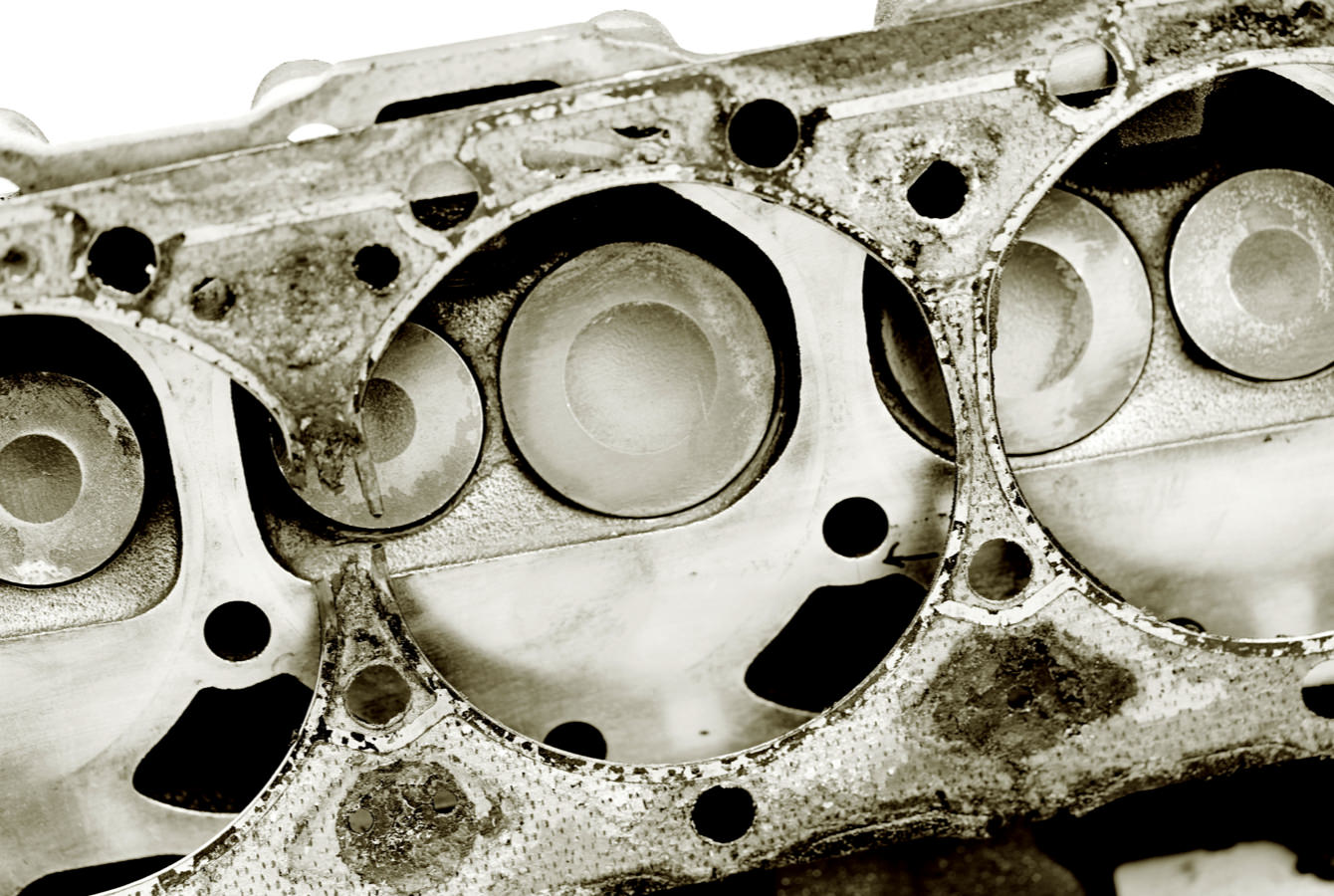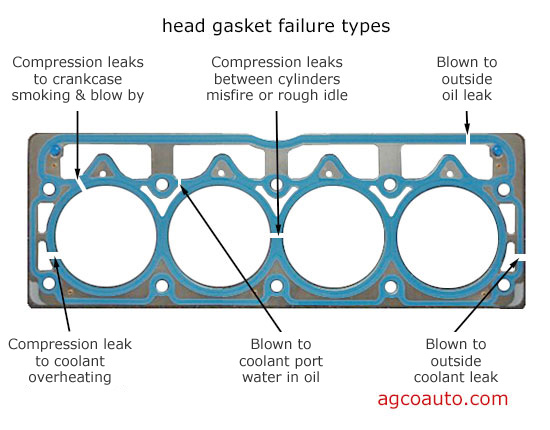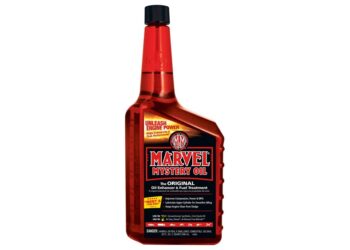A blown head gasket is a serious car issue. It can lead to costly repairs.
Diagnosing it early is crucial to prevent further damage. Your car’s engine relies on the head gasket to maintain proper function. This essential component creates a seal between the engine block and cylinder head. When it fails, various symptoms can arise, causing severe engine problems.
In this guide, we will cover the key signs of a blown head gasket. By understanding these symptoms, you can catch issues early and save on repairs. Whether you notice white smoke from the exhaust or overheating, knowing what to look for helps. Stay informed and protect your vehicle’s health with this comprehensive guide.

Credit: www.felpro.com
Blown Head Gasket Basics
A blown head gasket can cause severe engine issues. It is crucial to understand the basics. Let’s explore what a head gasket is and its importance.
What Is A Head Gasket?
The head gasket is a crucial engine component. It sits between the engine block and cylinder head. This gasket seals the combustion chamber. It prevents coolant and oil from mixing. This ensures the engine runs smoothly.
Importance Of A Head Gasket
A head gasket maintains engine efficiency. It ensures proper compression in the combustion chamber. This leads to better engine performance. It also prevents coolant and oil leaks. These leaks can cause severe engine damage. So, a healthy head gasket is vital for engine health.
Common Symptoms
A blown head gasket is a serious issue for any vehicle. Recognizing the common symptoms early can save you from costly repairs. Below are some key indicators to look out for.
Engine Overheating
One of the most obvious symptoms is engine overheating. A blown head gasket can disrupt the engine’s cooling system. This can cause the engine temperature to rise. If you notice your temperature gauge creeping up, it might be time to check the head gasket.
White Smoke From Exhaust
Another telltale sign is white smoke from the exhaust. This smoke indicates that coolant is leaking into the engine’s cylinders. When this happens, the coolant burns off as white smoke. It’s a clear sign that something is wrong.
Milky Oil
Check your oil regularly. If you find milky oil, it means coolant is mixing with the oil. This is a serious issue and a clear sign of a blown head gasket. The mixture of oil and coolant forms a milky substance that can damage your engine.
| Symptom | Cause |
|---|---|
| Engine Overheating | Disrupted cooling system |
| White Smoke from Exhaust | Coolant leaking into cylinders |
| Milky Oil | Coolant mixing with oil |
Keep an eye out for these symptoms. Early detection can save your engine and your wallet.
Causes Of Blown Head Gasket
A blown head gasket is a serious issue that can cause major engine damage. Understanding the causes can help prevent this costly problem. Let’s explore the main reasons why a head gasket might fail.
Engine Overheating
Engine overheating is a common cause of a blown head gasket. When the engine gets too hot, it can warp the head and block. This warping puts extra pressure on the gasket, causing it to fail. Regularly check your coolant levels. Ensure your cooling system is working properly.
Poor Engine Design
Some engines have design flaws that make head gasket failure more likely. These flaws can include weak gasket materials or poor cooling system design. Manufacturers sometimes use cheaper materials to cut costs. This can lead to a higher risk of gasket failure.
Incorrect Installation
Incorrect installation of the head gasket can also lead to failure. If the gasket is not seated properly, it will not seal correctly. This improper sealing allows coolant and oil to mix. Always ensure a qualified mechanic installs your head gasket. Follow the manufacturer’s specifications closely.

Credit: www.youtube.com
Diagnosing A Blown Head Gasket
A blown head gasket can cause serious engine problems. Diagnosing it early can save you from costly repairs. In this section, we will look at three methods to diagnose a blown head gasket: Visual Inspection, Compression Test, and Chemical Test.
Visual Inspection
Start with a visual inspection. Look for these signs:
- White smoke from the exhaust
- Milky oil (indicating coolant in the oil)
- Overheating engine
- Bubbles in the radiator or coolant overflow tank
If you notice any of these signs, a blown head gasket might be the cause.
Compression Test
A compression test can help confirm a blown head gasket. Follow these steps:
- Remove the spark plugs.
- Insert the compression gauge.
- Crank the engine.
Record the readings for each cylinder. Compare them to the manufacturer’s specifications. Significant differences in readings indicate a potential blown head gasket.
Chemical Test
A chemical test is another way to diagnose a blown head gasket. You need a test kit from an auto parts store. Follow these steps:
- Open the radiator cap (only when the engine is cool).
- Use the test kit to sample the coolant.
- Check the color change in the test liquid.
If the liquid changes color, it indicates exhaust gases in the coolant. This is a sign of a blown head gasket.
Temporary Fixes
Diagnosing a blown head gasket can be daunting. Sometimes, you need a quick fix before a permanent solution. These temporary fixes can help you manage the issue until you can repair it properly.
Sealant Products
Sealant products can temporarily fix a blown head gasket. These products seal leaks in the gasket. Follow these steps for using sealants:
- Read the product instructions carefully.
- Drain some coolant to create space for the sealant.
- Pour the sealant into the radiator.
- Run the engine to circulate the sealant.
This method can seal small leaks and prevent coolant from escaping. Remember, this is only a temporary solution.
Coolant Additives
Coolant additives can also serve as a temporary fix for a blown head gasket. These additives are mixed with the coolant to improve sealing properties. Here’s how you can use them:
- Purchase a reliable coolant additive.
- Follow the instructions on the bottle.
- Mix the additive with your existing coolant.
- Run the engine to ensure the additive circulates well.
Coolant additives can help reduce leaks and improve engine performance. But remember, this is not a permanent fix.
Permanent Fixes
Dealing with a blown head gasket is a serious issue for any vehicle owner. Permanent fixes are essential to ensure your car runs smoothly. This section will cover two primary permanent fixes: head gasket replacement and engine rebuild.
Head Gasket Replacement
Replacing the head gasket is a common permanent fix. This involves removing the old, damaged gasket and installing a new one. It’s crucial to use a high-quality gasket. A well-fitted gasket can restore the engine’s efficiency. Ensure the cylinder head is not warped before installing the new gasket. This process requires precision and knowledge. Many choose to have a professional mechanic handle this task.
Engine Rebuild
Sometimes, the damage from a blown head gasket is extensive. An engine rebuild might be necessary. This process involves taking the engine apart and inspecting each component. Worn-out parts are replaced or repaired. The engine is then reassembled to factory specifications. Rebuilding the engine can extend the life of your vehicle. It also ensures that the engine runs as efficiently as possible. Though costly, it’s a worthwhile investment for long-term performance.
Preventing A Blown Head Gasket
A blown head gasket can lead to severe engine damage. Preventing this issue saves you from costly repairs. Regular maintenance and proper engine cooling are key.
Regular Maintenance
Regular maintenance is crucial for engine health. Check your engine oil and coolant levels frequently. Low levels can increase engine temperature and pressure, causing gasket failure.
- Change the oil as per the vehicle’s manual.
- Use the correct type of oil and coolant.
- Inspect the engine for leaks or wear.
- Replace old or damaged gaskets.
Visit a mechanic for a thorough inspection twice a year. They can catch early signs of trouble. This practice can prevent a blown head gasket.
Proper Engine Cooling
Proper engine cooling is essential to prevent overheating. Overheating can damage the head gasket.
- Ensure your radiator is working correctly.
- Check the coolant level regularly.
- Flush and refill the cooling system as recommended.
- Ensure the thermostat is functional.
A well-maintained cooling system keeps the engine temperature in check. It reduces the risk of a blown head gasket.
Install a high-quality radiator cap. It helps maintain the correct pressure in the cooling system.
Following these steps helps in preventing a blown head gasket. It ensures your engine runs smoothly and lasts longer.
Cost Considerations
Diagnosing a blown head gasket can save your engine from severe damage. But the cost of fixing it can vary. Understanding these costs can help you budget and make informed decisions. Here, we break down the repair and replacement costs.
Repair Costs
Repair costs for a blown head gasket depend on the extent of damage. Labor charges can be high since it is labor-intensive work. Mechanics need to disassemble and reassemble parts. On average, expect to pay between $1,000 and $2,000.
Parts like gaskets and seals are relatively cheap. But other parts might need replacement, which adds to the cost. The price can increase if the engine block is damaged.
Replacement Costs
Sometimes, repairing a blown head gasket is not enough. You might need to replace it. Replacement costs are higher than repair costs. On average, full replacement ranges from $2,000 to $4,000.
This includes parts and labor. The cost can vary based on your car’s make and model. Luxury or rare cars might have higher costs. Always get a detailed estimate before proceeding.

Credit: www.agcoauto.com
Frequently Asked Questions
What Are The Signs Of A Blown Head Gasket?
Common signs include white smoke from the exhaust, engine overheating, and milky oil. Pay attention to these symptoms.
How Can I Test For A Blown Head Gasket?
Use a combustion leak tester or a compression test. These tests can help confirm the issue.
Can A Blown Head Gasket Cause Engine Damage?
Yes, it can. It may lead to overheating, oil contamination, and engine failure if not repaired.
How Much Does It Cost To Fix A Blown Head Gasket?
Repair costs vary. It typically ranges from $1,000 to $2,000. It depends on the vehicle and labor rates.
Can I Drive With A Blown Head Gasket?
Driving with a blown head gasket is risky. It can cause severe engine damage. Get it repaired immediately.
Conclusion
Diagnosing a blown head gasket is crucial for your car’s health. Early detection can save you from costly repairs. Look out for symptoms like white smoke, engine overheating, and coolant loss. Regular maintenance checks help catch these issues early. Don’t ignore warning signs.
Consult a professional mechanic if in doubt. Proper care and attention keep your car running smoothly. Stay proactive and keep your vehicle in top shape. Your car will thank you.
















